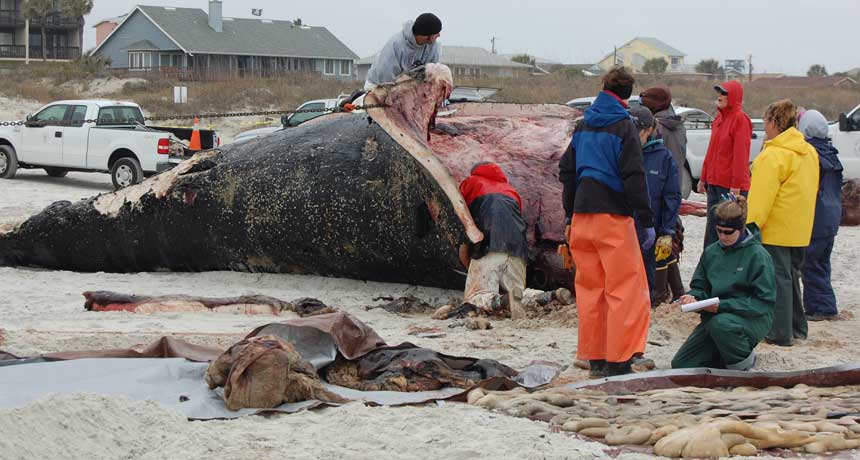Scientists Say: Autopsy and Necropsy
These two words describe examinations of animals after they die

This photo shows scientists performing a necropsy — an investigation to determine the cause of death — on a beached whale.
Rogers Cadenhead/Flickr (CC BY-SA 2.0)







